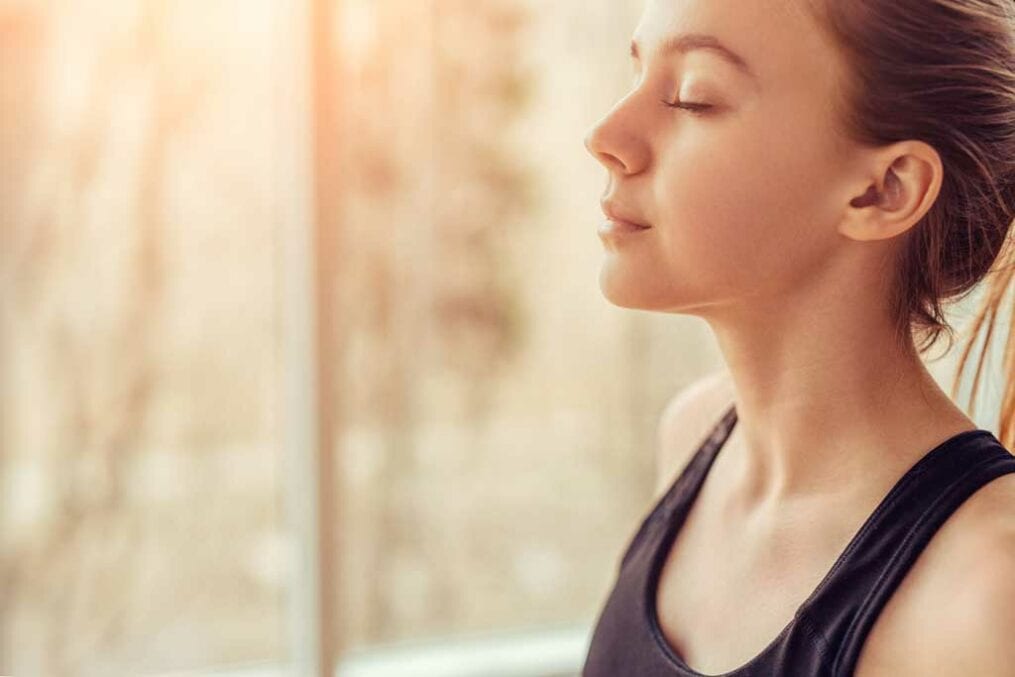

We do it over 23,000 times a day, without even thinking, and yet breathing, one of our most primal reflexes, is suddenly being hailed as the latest wellness phenomenon – with specific benefits for beauty. But how?
‘Breathwork’ – or pranayama – has been a part of the yogic tradition for centuries, but its recent adoption into the health and beauty mainstream means it’s reaching a whole new audience. Championed on social media by a growing number of facialists and body workers extolling its virtues – which range from glowing skin to improved sleep and hormone regulation – it seems that breathwork for beauty is set to revolutionise our routines.
Behind the breath
So what exactly is ‘breathwork’, and why bother? ‘Breathing well is something the majority of us don’t know how to do properly. In addition, we forget to breathe deeply due to stress,’ explains Katie Light, a facialist and founder of the Light Technique. ‘When the breath is continuous and in flow, we encourage more oxygen into the organs, cells and systems of the body. We feel more grounded, with greater clarity of mind.’
While many of us have been coached to take ‘a few deep breaths’ before a facial or massage, this new holistic approach goes deeper. ‘I start every treatment with breathing rituals that allow my client to release tension, stay calm mentally and spiritually connect with themselves,’ says Beata Aleksandrowicz, facial massage expert and creator of the Face Cure – an anti-ageing treatment which combines breathwork with touch and sound healing. ‘Breath is a bridge between the outer and inner world of the person I work with, and allows my treatment to be more effective.’
While the burgeoning field of psychodermatology analyses how mental wellbeing impacts skin, the theory is that breathwork ‘un-taps’ emotional blockages which could manifest as physical symptoms.
‘When we are under stress, it will show on the skin,’ says Light. ‘For example, sleep deprivation could result in dehydration, breakouts or eczema on the skin, depending on the person. When you start to work through and with the breath, you can see so many positive changes.’
Outside the treatment room, the wellness crowd are switching on to breathwork’s potential to overhaul their energy levels and boost resilience. With an Instagram following of 40.6k, Richie Bostock first became interested while researching treatments for his father, who had been diagnosed with multiple sclerosis. Fast forward a few years and his classes at top health clubs are permanently booked up.
‘The way we breathe directly affects our cardiovascular system, endocrine system, digestive system, nervous system, immune system and lymphatic system,’ says Bostock. ‘And it’s the state of these that largely dictates our physical and mental health.’ It’s a pretty compelling argument. Not to mention the fact that breathwork is accessible to all, and (once you’ve mastered the basics) free.
What’s the science?
So how does all of this impact skin? And is there any hard science to suggest breathwork could have beauty benefits? ‘Our lungs not only provide us with vital oxygen, but also help us to release toxins from every cell,’ says Aleksandrowicz. ‘While I can’t claim any specific conditions will be healed, with deep breathing we offer more oxygen and nutrients, which has a positive effect.’ Light agrees. ‘Breathing well can create a powerful change for skin – as much as any topical product. It gives more oxygen to the body and all its cells.’
If all of this feels like a giant leap of faith, evidence is emerging that may shed further light. In 2019, the Nobel Prize in Physiology or Medicine was awarded to three scientists for their work on how cells ‘adapt to oxygen availability’, and a protein called hypoxia-inducible factor, or HIF, which boosts the number of red blood cells in the body during periods of oxygen deprivation. This may shine a light on how manipulating the breath for short periods could stimulate cell activity – the desired function of most advanced face creams. Time to take a deep breath.
